Not much surprises me any more based on the research I’ve done for my books and blogs. But every so often, I run across a story that makes me shake my head in disbelief.
It’s bad enough reading about Nazi collaborators and traitors who were responsible for thousands of deaths either directly or through deportations to the concentration camps. But imagine my surprise running across the story of Stella Goldschlag-Kübler who was responsible for intentionally betraying up to three thousand Jews to the Nazis. Why the surprise? Stella was Jewish. Berlin Jews knew her as the “Blonde Lorelei” while the Nazis referred to her as “Blonde Poison.”
She earned those wartime nicknames at the expense of thousands of lives.
Did You Know?
Did you know that most of us have forgotten about Art Buchwald (1925−2007) or don’t recognize his name? Buchwald was a legendary writer who wrote satirical newspaper columns. Beginning in 1950, he published three columns per week (“Paris After Dark”) for the European edition of the New York Herald Tribune (later, the International Herald Tribune). The columns quickly became popular, and Buchwald established his reputation on both sides of the Atlantic.
He moved back to the States in 1962 and began writing for the The Washington Post. His biting political satires touched both sides of the Beltway aisle. Buchwald once spoofed a press conference held by President Eisenhower’s press secretary, James Hagerty. In response, Hagerty presided over his own press conference and called Buchwald’s article as “unadulterated rot.” The famous retort by Buchwald was, “Hagerty is wrong. I write adulterated rot.”
Although Art Buchwald did poorly in science (“I still don’t know how to make a hydrogen bomb”), he was very astute and clairvoyant in history. He once said, “You can’t learn from history, unless you rewrite it.” Fifteen years after his passing, Buchwald’s words certainly ring true today, don’t they?
I don’t know a contemporary satire columnist in the same league as Buchwald. If you do, please let me know. I can be reached at stew.ross@yooperpublications.com.
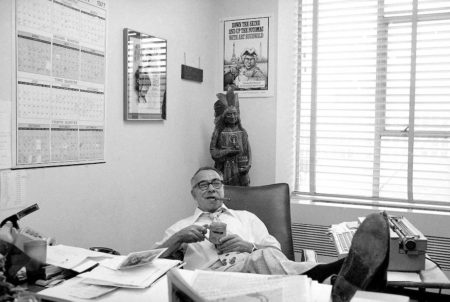
As an aside, I mentioned in our last blog that the last living World War II Medal of Honor recipient, Woody Williams, passed away recently. Congress honored Woody by allowing his remains to lie in honor in the U.S. Capitol. It is a tribute reserved for the nation’s most distinguished private citizens. Mr. Williams certainly meets and exceeds that requirement.
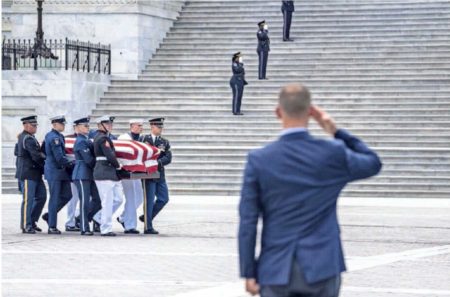
Stella Goldschlag
Stella Goldschlag (1922−1994) was born in Berlin, Germany and raised in a middle-class Jewish family. Her father, Gerhard Goldschlag (1889−1944) was a composer and conductor working for the film company Gaumont. Stella’s mother, Toni Goldschlag (1890−1944) was a well-known concert singer in Berlin. Their daughter was very intelligent, attractive (blonde with blue eyes), and vivacious. After the Nazis took power in 1933, Stella and other Jewish children were no longer allowed to attend public schools. She and the others joined a private school founded and operated by the Jewish community. At the same time, Jews were being purged from their jobs and her father lost his position at Gaumont.
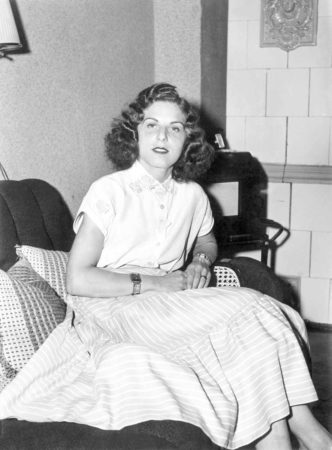
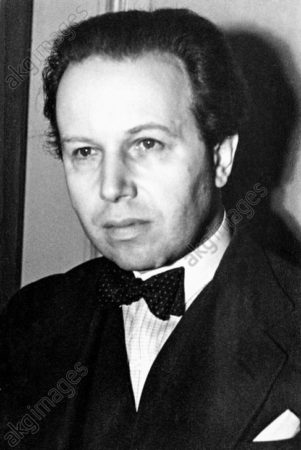
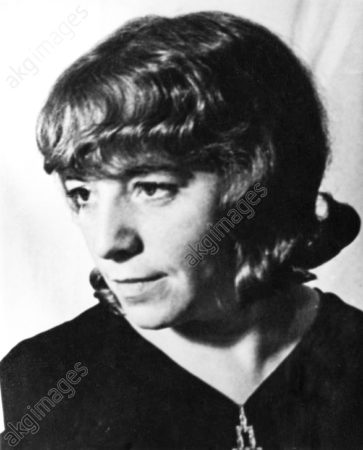
Immediately after Kristallnacht (1938), the Goldschlag family attempted to leave Germany, but they were unable to procure the necessary travel documents. (Despite being fully aware of Hitler’s actions against Jews, many countries including the United States imposed strict immigration quotas limiting the ability of Jews to flee Nazi Germany.) It was right about that time when Stella completed her education. The war began in September 1939 and German Jews, in increasing numbers, were beginning to be arrested.
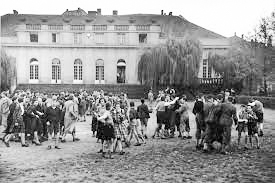
Marriage, Arrest, and Going Underground
In 1941, Stella married a Jewish musician, Manfred Kübler (c.1923−1943). Shortly afterward, Stella and her husband along with her parents were arrested and used as forced labor in a Berlin munitions factory. However, by January 1942 the Nazis had approved the “Final Solution” (click here to read the blog, Hitler’s Enablers−Wannsee Conference) and the situation for the remaining Jews in Berlin became even more lethal.
Fabrikaktion
On 27 February 1943, the roundup of the last Jews remaining in Berlin began. After the war, survivors gave this roundup the name, Fabrikaktion, or “Factory Action.” Jews working in the factories or Jewish welfare organizations were targeted for arrest and deportation to the east. There were about 75,800 Jews left and the Nazis used six collection centers to process the arrested men, women, and children. One was the house of the Jewish Community located on Rosenstraße in the Mitte district. This location became famous because the “Aryan” wives of Jewish men imprisoned protested and demanded the release of their husbands. This was the only known public demonstration against Nazi authority and it was successful.
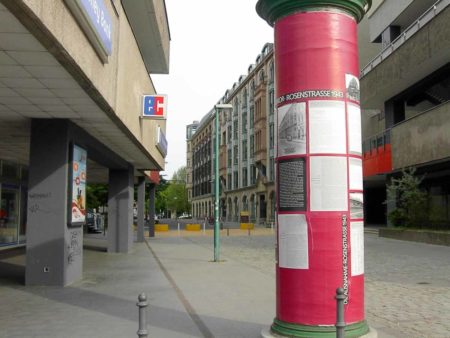
Stella and her mother escaped the roundup (presumably because they looked Aryan) and decided to go underground. Unfortunately, Stella’s husband was arrested and deported to KZ Auschwitz II-Birkenau where he was murdered on 3 May 1943. After the Fabrikaktion, about 4,700 of the remaining Jewish men, women, and children went into hiding. Only about fifteen hundred survived the war. The Germans used Jewish collaborators to identify and apprehend Jews who were hiding in Berlin. These collaborators were called Greiferin, or “Catchers” and the Gestapo paid them between 200 and 300 Reichsmarks for each arrested Jew.
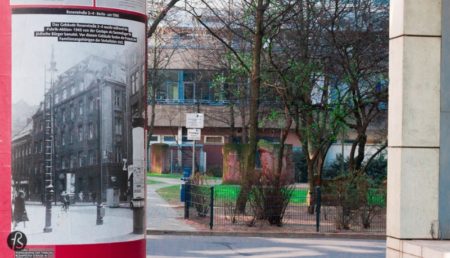
Going Underground and Arrest
Samson “Cioma” Schönhaus (1922−2015; aka: Günther Rogoff) was a fellow student of Stella at the art school she attended, and he provided his friend with false papers that allowed her to pass as a non-Jew (being blonde and blue-eyed didn’t hurt her chances either). Although in hiding, Stella was able to leave from time-to-time and circulate in the city. In the spring of 1943, she met Rolf Isaaksohn (1921−?), a Jew who passed himself off as Italian. While waiting in a bar for Rolf in July 1943, Stella was spotted by someone who knew her. The Jewish woman worked for the Nazis as a Greifer (“catcher”) and Stella was immediately arrested by the Gestapo agents who accompanied the Jewish collaborator.
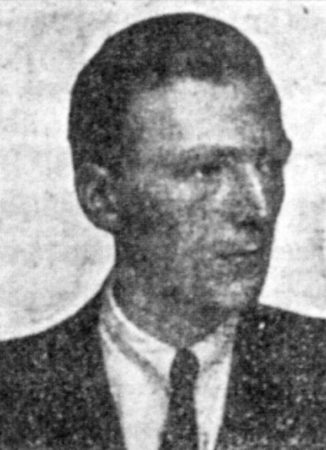
Taken to a local Gestapo station (it was essentially a torture chamber), her forged papers were immediately discovered. Stella was brutally interrogated, tortured, and threatened with execution if she did not divulge the identity and whereabouts of the person who forged her documents. She did not know where Rogoff could be found, and her interrogators came to reluctantly believe her. However, Stella was thrown into the Bessemerstraße prison barracks in the Tempelhof district where she managed to escape several days later. She found shelter with her parents who were still in hiding in the western section of Berlin.
Less than a day after reuniting with her parents, Stella was arrested along with her parents. Gerhard and Toni were sent to the transit camp at Große Hamburgerstraße 26, but the Gestapo was still looking for the document forger and they detained Stella once more for interrogation. She was returned to Bessemerstraße where on 23 August 1943, Allied bombs hit the prison. During the panic and confusion, Stella escaped for the second time. However, this time, she voluntarily returned to the Nazis.
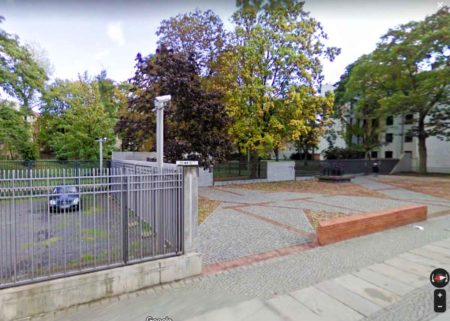
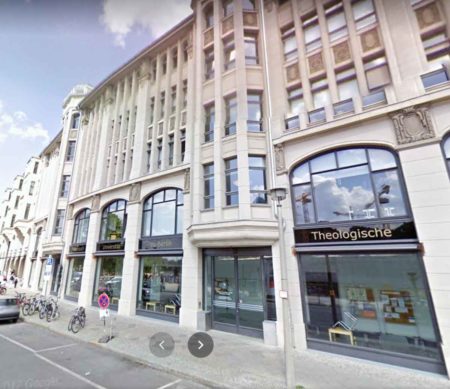
Greiferin
Stella made her way to the transit camp on Große Hamburgerstraße to be with her parents. After her arrival, the Gestapo still believed she could lead them to Rogoff, and she was given the choice of assisting them in locating Rogoff or deportation to Auschwitz II-Birkenau along with her parents. Stella chose to cooperate, but it quickly became obvious that she didn’t know where to find the forger. The Nazis placed Stella and her parents on the list to be deported. During this time, Isaaksohn was arrested and recruited to work for the Nazis as a Greifer. The camp’s commandant offered Stella the opportunity to become a Greifer and in return for a Gestapo promise not to deport her parents, Stella readily accepted the offer to become a Jewish informer for the Gestapo.
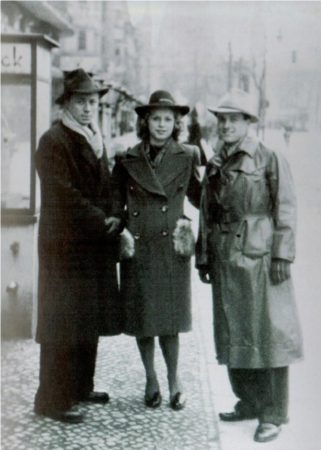
Stella and Rolf were trained by the Gestapo, and they became members of the Jüdischer Fahndungsdienst, or “Jewish Search Service.” There were about twenty Greiferin and each carried a gun and documents identifying them as Gestapo agents. SS-Hauptscharführer Walter Dobberke (1906−1946) was in charge of the unit and Stella and Rolf were by far his most effective “catchers.” While Stella was attractive with a good memory, Rolf was unscrupulous and violent.
Stella and Rolf often worked together. They targeted Jews they knew from the past especially former schoolmates and their families and friends. The Greiferin posed as Jews in hiding or offered food and accommodation before turning their victims over to Dobberke and his agents. Stella’s methods were more subtle than Rolf who used guns and violence to subdue his quarry. (Rolf was responsible for turning some of his relatives over to the Gestapo.) Despite becoming the top “catcher” for the Nazis, Stella’s world began to crumble in early 1945.
“She had the reputation of being able to smell out hidden Jews and defectors.”
– Inge Deutschkron
Holocaust survivor
In February 1945, the Nazis broke their promise to Stella and deported her parents to Theresienstadt and then to Auschwitz II-Birkenau where they were murdered upon their arrival. Despite the broken promise, Stella continued to enthusiastically work as a Greifer for the Gestapo. Around this time, she married Rolf and they continued working as a team to catch hidden Jews. However, the marriage didn’t last long and Stella became pregnant after having an affair. She went into hiding in March 1945 and her daughter, Yvonne, was born in Liebenwalde, a village north of Berlin. On 2 May, the Soviets took Berlin and Stella was arrested by the local police. Her baby was taken away from her and never returned to Stella.
Post-War
After her arrest, Stella was transferred to the Jewish Community in Berlin. She was instantly recognized by many of the Jewish survivors who tried to take revenge. Before any serious harm came to her, Stella was taken to the Soviet authorities and interrogated before being put on trial. It only took minutes before the three judges found Stella guilty and sentenced her to 10-years of hard labor. Stella spent the first two years of her imprisonment at Sachsenhausen, a former concentration camp. After that, she was transferred to other prisons within the Soviet zone of occupation (i.e., East Germany). Stella was released after serving her sentence and immediately began proceedings to obtain custody of her daughter. Although all she wanted was to start a new life, it wasn’t to be, and Stella failed in her custody battle.

A year after her release from Soviet custody, the West German authorities arrested Stella in 1957 and she was put on trial once again. The judges understood Stella’s motivations for working with the Nazis due to her parents’ situation, but that consideration only worked in her favor up to a point. Finding witnesses for the prosecution was not hard. A psychiatrist diagnosed Stella as a schizophrenic psychopath. Stella denied all charges and claimed she was the victim of a Jewish conspiracy against her. After four trial days, Stella was found guilty of murder. Although sentenced to 10-years, Stella never went to jail because of her prior imprisonment by the Soviets.

Death
By 1994, Stella had gone through five marriages and was calling herself Ingrid Gärtner. Suffering from depression and schizophrenia, Stella committed suicide by throwing herself off the balcony of her apartment in Berlin.
Stella never showed any remorse or signs of guilt for her collaboration with the Nazis. She converted to Christianity and became a notorious anti-Semite. In fact, to the day she died, Stella maintained that she was the victim of the Jews.
A post-war warrant was issued for the arrest of Rolf. He was never found and in 1953, the East German government pronounced him dead. His fate is still a mystery.
Yvonne emigrated to Israel where she became a nurse. She refused to have anything to do with her mother.
While it is always better to remember the stories of Jewish resistance, we can’t overlook Jewish collaborators like Stella Goldschlag. Unfortunately, these betrayals throughout the occupied countries were not as rare as we might think. Based on the fates of other Jewish collaborators, Stella was lucky she was not murdered or executed by the authorities.
Click here to watch the video The Compelling Execution of Ans van Dijk – The Hunter of Amsterdam.
Click here to watch the video Top 10 Nazi Collaborators Who Were Jews.
Next Blog: Sandy & Stew’s Summer Vacation in the U.K. – 13 August
★ Learn More About Stella Goldschlag-Kübler ★
Gross, Leonard. The Last Jews in Berlin. New York: Open Road Media, 2015 (original publication: 1982).
Moorehouse, Roger. Berlin at War. New York: Basic Books, 2010.
Wyden, Peter. Stella: One Woman’s True Tale of Evil, Betrayal, and Survival in Hitler’s Germany. New York: Anchor Books, 1992.
Peter Wyden (1923−1998) was Stella’s classmate during the 1930s. He and his family escaped to the United States otherwise, it is likely he would have suffered the same fate as many of his other school friends. In other words, Stella would have betrayed Peter and his family.
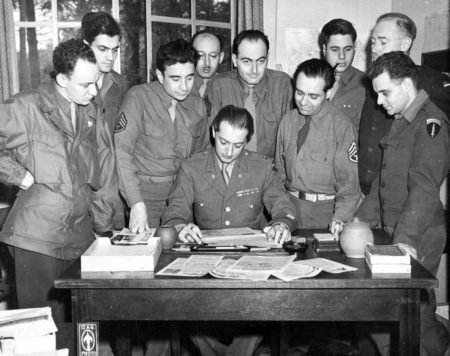
Disclaimer:
There may be a chance that after we publish this particular blog, the video links associated with the blog are no longer accessible. We have no control over this. Many times, whoever posts the video has done so without the consent of the video’s owner. In some cases, it is likely that the content is deemed unsuitable by YouTube. We apologize if you have tried to access the link and you don’t get the expected results. Same goes for internet links.
What’s New With Sandy and Stew?
Sandy and I are getting ready for our last trip of the year. Before we leave for our trips, I frantically try and churn out enough blogs to get us past the trip plus two weeks. In many cases, that means immediately producing at least four blogs. Once completed, Sandy whips them into shape for publishing and schedules the future distribution dates. (This way we can sip our Piña Coladas by the beach and not feel guilty.) After our next blog on 13 August (about the second half of our summer vacation), we have Prince, King, and … Traitor? queued up to publish on 27 August. By then we’ll be back from Alaska and Montana.
Thank you to all of you who subscribe to our bi-weekly blogs. It seems there isn’t a day that goes by where we don’t increase our readership. Please let your history buff friends and family members know about our blog site and blogs.
Someone Is Commenting On Our Blogs
I’d like to thank Vincent V. from the Netherlands and John B. from the Orlando, Florida area for their very kind comments regarding our recently published book, Where Did They Put the Gestapo Headquarters? A Walking Tour of Nazi-Occupied Paris (click here to see the book). It’s comments like those that keep us going.
Susan B. reached out to us concerning our prior blog, Something Must Be Done (Click here to read the blog.) It turns out Susan knew Suzanne Spaak’s children back in the 1980s. Susan is about the fifth or sixth person to write us regarding their personal experiences with the children (obviously now as adults).
If there is a topic you’d like to see a blog written about, please don’t hesitate to contact me. I love hearing from you so keep those comments coming.
Share This:
Follow Stew:
Find Stew’s books on Amazon and Apple Books.
Please note that we do not and will not take compensation from individuals or companies mentioned or promoted in the blogs.
Walks Through History
Copyright © 2022 Stew Ross


I really like your blog. I found it when reading “The last Jews in Berlin” and googling “ Rolf Isaaksohn,”. He was according to the book’s author the most prolific catcher. I will read the other books you have mentioned. Thanks.
Hi Paul, thanks for contacting us. I really appreciate your kind comments. I hope you enjoy our future bi-weekly blogs as well as some of the past ones. STEW